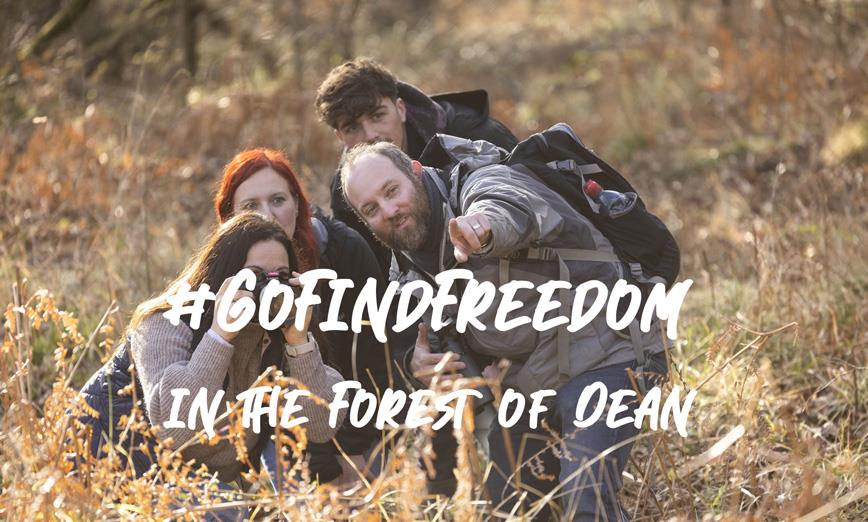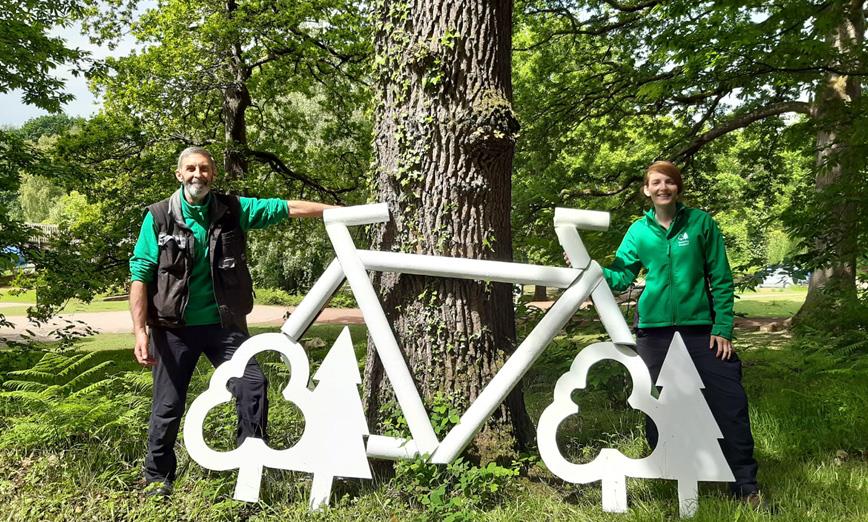- Stay
- What's On
- Things To Do
- Food & Drink
- Explore
- Inspiration
- Offers
- Weddings
- Blog
My Planner
- Stay
- What's On
- Things To Do
- Food & Drink
- Explore
- Inspiration
- Offers
- Weddings
- Blog
You are here: Explore > Nature & Wildlife
From the 20 million trees in the Forest of Dean to the 58 mile long Wye Valley AONB, our natural beauty, dramatic landscapes and plethora of flora and fauna are what make our area so unique. You can walk for miles along glorious paths and see a wide range of local plants, trees and animals. You can spot unusual birds in a number of reserves, hear the most divine dawn chorus, see deer and boar if you're lucky, and in fact you may even see some of our resident wildlife from your holiday accommodation. Nature is at the heart of the Forest of Dean and Wye Valley and in these pages we hope you will learn a little more about what makes this area so special.
About the Forest of Dean
The Forest of Dean was recorded as The Forest in the 'Domesday Book' (1086) and as Dene or Dean after the Old English Denu for valley. In medieval times it was a royal hunting forest, before becoming a source of timber for the navy's Tudor warships. By Victorian times it was a major site of industry, with coal mining and tramways punctuating the landscape. In 1924 it was transferred to the Forestry Commission and in 1938 it was designated as the first National Forest Park in England. Today, it is still a working forest and Forestry England manages it sympathetically and sensitively while liaising on conservation matters with the main conservation bodies.
The Forest of Dean is bound by the rivers Wye to the north and west, and the Severn to the south and east. Around the Forest are rolling hills, farms and vineyards and many interesting villages and towns. These ancient woodlands and its variety of wildlife hold many surprises just waiting to be discovered.
About the Wye Valley
The Wye Valley Area of Outstanding Natural Beauty (AONB) is an internationally important protected landscape, first designated an AONB in 1971. It is one of the most dramatic and scenic landscapes in Britain and straddles the border between England and Wales. Although the River Wye is the fifth-longest river in the UK at 134 miles long, the Wye Valley AONB covers the southern-most 126 sq miles, from Hereford in the north to Chepstow in the south where the Wye meets the Severn.
Having the same level of protection as a National Park, the purpose of the AONB is to conserve and enhance the outstanding landscape of the Wye Valley, so that we, and future generations, can enjoy it. The Wye Valley offers a varied and contrasting geographical landscape, from the flatter Herefordshire valley with a winding river, to dramatic limestone cliffs with nesting peregrine falcons.
Find Out More
Find Your Freedom
- We have a wide range of wildlife here in the Forest of Dean and Wye Valley, including deer, boar and birds. Find out about the animals which live here and where you might be able to spot them on your visit.
- The Forest of Dean and Wye Valley is home to a huge variety of birds throughout the year. Some are resident and can be seen in great numbers while others come here for the spring and summer, or autumn and winter. The mosaic of woodland, heathland, bogs and mires, rivers and streams, farmland and grassland habitats provide a rich environment for birds, many of which are nationally rare.
- Our wildlife experiences and nature-based activities are of course abundant here in our ancient forest and wild river valley. Our countryside holds many treasures and we have a wide range of activities and experiences ideal for exploring and learning about our natural world. We have foraging and bushcraft experiences, wildlife safaris and birdsong walks, birds of prey and falconry experiences and much much more.
- Boar were once common in the Forest of Dean and were hunted for food. In medieval times, boar from the Royal Forest were supplied for the king's table - there is a record of an order for 100 boars and sows for a Christmas feast in 1254.
- There are three species of deer to look out for in the Forest of Dean and Wye Valley: the fallow, roe and muntjac. There is a good chance of seeing deer particularly once you move away from busy areas.
- The natural world is abundant here and there are so many wild and magical places to explore in the Forest of Dean and Wye Valley. Places you can explore off the beaten track, where you can immerse yourself in nature, places where you can discover ancient trees, impressive wildlife and places you can take the whole family for a great day out.
- The underlying geology of the Forest of Dean is limestone and sandstone and has resulted in a rich and varied flora. The Forest is home to many wild flowers, from winter snowdrops to spring bluebells, daffodils and foxgloves
- The Forest of Dean and Wye Valley is home to some of the most spectacular shows of bluebells in the country and visitors eagerly await their return each year and the pleasure of seeing the stunning carpets of bluebells that can be found deep in the woods or even viewed from the road while driving. Here are our best places to see bluebells in the Forest of Dean and Wye Valley.
- The area around Dymock, on the Gloucestershire and Herefordshire borders, is famed for its wild daffodils that can be seen each year around the end of March. Once a common sight throughout Gloucesteshire, and its county flower, these small blooms are now found mainly in the "golden triangle".
- There are over 20 million trees in the Forest of Dean alone with a wide range of both deciduous and evergreen trees. Predominant is oak, both pedunculate and sessile. Beech is common and sweet chestnut has grown here for many centuries, as well as ash, birch and holly. Conifers include some Weymouth pine from 1781, Norway spruce, Douglas fir and larch.
- If you haven't yet witnessed the incredible spectacle that is the Severn Bore, make a date to do so, it's well worth it. One of Britain's few natural phenomena, the Severn Bore is a large surge wave that can be seen in the estuary of the River Severn, where the tidal range is the 2nd highest in the world, being as much as 50 feet (approx. 15.4m).
- You don't need to travel far to spot birds and wildlife in the Forest of Dean and Wye Valley. But our nature reserves, ponds, lakes and RSPB reserves are great options if you'd like a better chance of spotting our fabulous range of creatures.
Explore Our Highlights

- 1Wye Valley Miniature Golf
- 2Tintern Abbey Cottage
- 3Briery Hill Llamas
- 4Classic Cottages
- 5Hereford Cathedral
- 6Humbug Barn
- 7Greenacres Campsite
- 8Oakwood Cottage
- 9Leaf Creative
- 10Puzzlewood
- 11Mallards Pike
- 12Foresters Bar & Outdoor Terrace
- 13Verderers’ at The Speech House
- 14Dippers Hut - Luxury Shepherd's Hut with hot tub
- 15River Wye Canoe Hire
- 16Mallards Pike Cafe
- 17Chaxhill - Holly Barn
- 18Wye Valley Butterfly Zoo
- 19NoLo Cocktails
- 20The Speech House Hotel
- 21The Zero Project Treehouse at the Dome Garden
- 22Forest Deli Picnic Experience
- 23Tudor Farmhouse Hotel & Restaurant
- 24Puzzlewood Cottages

©Visit Dean Wye 2025. All Rights Reserved.
*Visit Dean Wye is the trading name of Forest of Dean & Wye Valley Tourism Limited.










